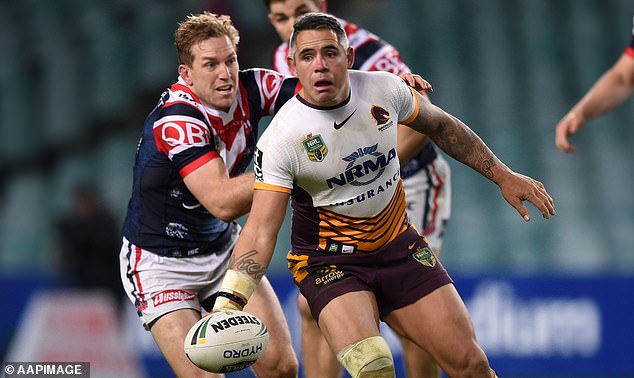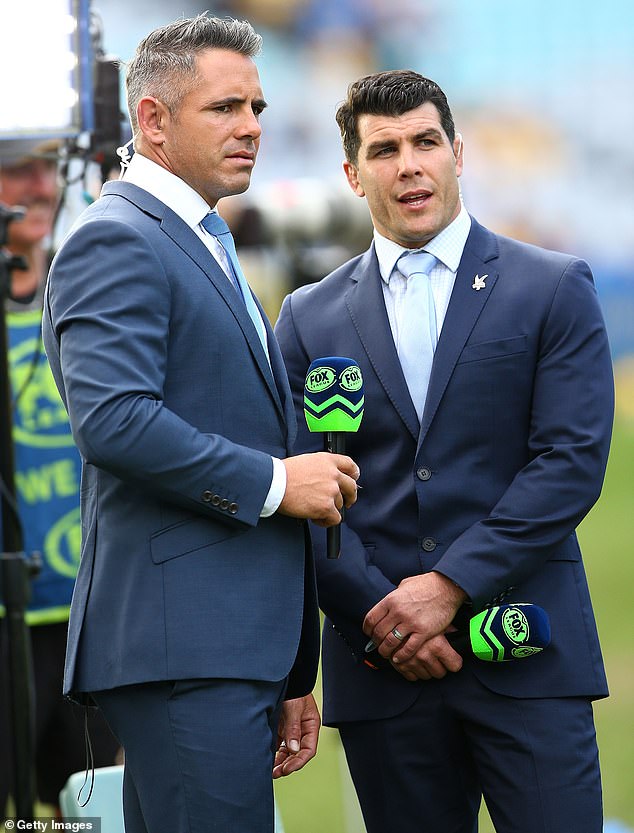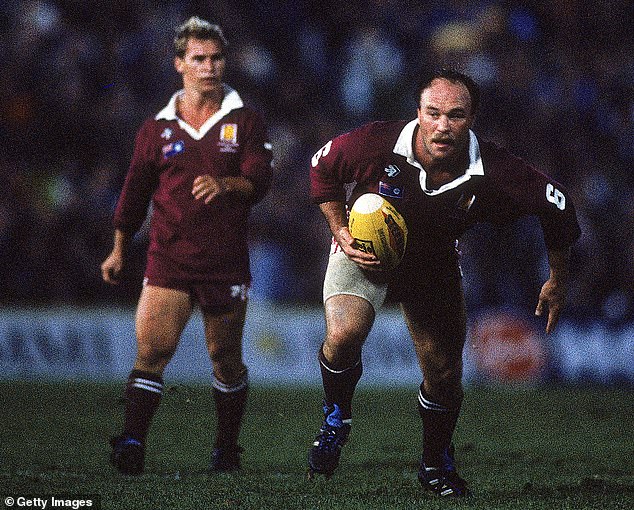Footy great Corey Parker reveals his deadly personal health battle at just 41 years of age
- Adamant he suffers from a fatal brain disease
- Broncos played great NRL rep footy from 2001 to 2016
- Star turned TV commentator finds his brain deteriorating
NRL legend Corey Parker has revealed he has ‘no doubt’ he is suffering from the effects of the deadly brain disease chronic traumatic encephalopathy (CTE).
Parker, 41, played 347 games for the Broncos, as well as 19 games for Australia and 13 Origins for Queensland in his decorated career.
The father of four revealed in a radio interview that he is already noticing his brain is deteriorating.
CTE is a degenerative brain disorder strongly linked to repetitive head impacts and cannot be diagnosed until after death.
It can lead to dementia, personality changes and suicidal thoughts, and there is no cure or treatment.
“This CTE, it’s the word that’s obviously being thrown around, and rightly so: it’s real,” Parker said on SEN.
NRL legend Corey Parker (pictured with his wife and children) has revealed he has ‘no doubt’ he is suffering from the effects of fatal brain disease chronic traumatic encephalopathy

Parker, 41, played 347 games for the Broncos, as well as 19 games for the Kangaroos and 13 Origins for Queensland in a long and brutal career

The father of four suggested in a radio interview that he is already noticing his brain is deteriorating (pictured left, in his current media role at Fox League)
‘I do not doubt it; I have no doubt during my tenure as a rugby league player that I have symptoms, I have symptoms of CTE.
‘But it’s something you only really get to grips with when you’re post-mortem.
‘You can’t expect to play a sport with a lot of collisions at a high level for (almost) twenty of those years without any kind of side effects.
“You can try to arrange different things, but the damage is already done, right?”
Parker added that the NRL must take some responsibility for former and current players suffering from the condition, but is pleased to see changes being introduced at junior level.
His grim revelation comes after NRL icon Wally Lewis opened up about how his life has been affected by the symptoms of a probable case of CTE.
Parker also pointed out during his career that playing while concussed was widely seen as a badge of honor – and leaving the field was a sign of weakness.
“We kind of looked at it like, ‘Oh, this guy is so tough,'” he said.

Rugby league icon Wally Lewis (pictured with partner Lynda Adams) has been diagnosed with probable chronic traumatic encephalopathy (CTE)

Lewis sought professional help after the tragic suicide of premiership-winning Cowboys coach Paul Green, who was found to have CTE after his death
“But there were times in my career where I knew I had a concussion, I knew I was dazed.
‘Towards the end of my career I would buy myself time on the ground and grab a shoulder or leg until my head was good to go, then get up.
“I knew if I stood up I would stumble, which is definitely not the right way to think.”
In 2022, an autopsy of the brain of NRL premiership coach and former player Paul Green, who committed suicide, confirmed he had a severe case of CTE.
Lifeline 13 11 14; Beyondblue 1300 22 4636
